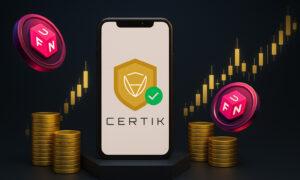Author: Max Krupyshev, CEO CoinsPaid
In just a few short years, the CoinsPaid team has gone from a startup to the leader in iGaming payment processing. And now, our well-established and well coordinated team of professionals has entered the DeFi space with its own token. In following our goal of enabling traditional businesses and their clients to use DeFi tools, we’ve taken the initial step in the journey of launching the first IDO in our company’s history. We consider this as one of our most significant events. In this article, I’d like to share my experiences and insights as CoinsPaid CEO on the IDO launch and how the initial stage of IDO successfully worked.
Around a year ago, I wrote an article on how to avoid scam projects in the DeFi world, where you can freely read my thoughts on the matter
During the IDO launch, my team and I compiled a checklist of actions, which will help to understand what steps to take first and what to focus on before the project releases.
CoinsPaid checklist
- Evaluate how feasible it would be to create the DeFi token or coin. CoinsPaid has carefully worked through tokenomics to consider all scenarios and built a successful strategy for developing the CPD token.
- Choose a platform for the launch and select a team of experienced advisors in the crypto sphere. If you already have a well-established team, involve them in the project instead of outsourcing. You can also hire managers to train your employees on the specifics of working with an IDO.
- Generate tokens on a blockchain that meets your needs and by answering the following questions: what algorithm is used, for what purpose, how many tokens are in issue, and so on. For example, CPD is an ERC 20-token based on the Ethereum blockchain.
- Think about your cross-chain strategy. In our ecosystem, the CPD token is available for ETH, TRX, BSC, SOL, and DOT blockchains, which lets both companies and users use the token to swap within other ecosystems and wallets. The “bridge” in this case is the network of smart contracts that becomes the guarantor of their execution using tokens.
- Formulate a distribution strategy and reserve a certain percentage of tokens for project creators and team members. Tokens retained in the project ecosystem are a proven motivation for every contributor.
- Prepare a document and include technical details, financial aspects, legal terms and conditions, and benefits offered to investors through the DeFi token or coin.
- Actively promote the token through various media channels to increase its demand. Form a community of interested people, negotiate as openly as possible, talk about events before/during and after the IDO. One of the critical indicators of a project’s stability is the willingness of its authors from the first days to be as open and ready as possible for any type of dialogue.
- After you activate and launch the token on the market, offer quick technical support to address questions that arise from users and investors.
Presently, CoinsPaid has either implemented the aforementioned steps or is in the process of doing so. Over the course of the project, we underwent a series of transformations that provided a deeper understanding of how the DeFi market works and what developers need to know when entering into this segment with a new product. Here are the recommendations I would like to share:
The process needs to be decentralized, while sales and tools should be on smart contracts.
An app that relies on third-party resources to store user assets cannot be called DeFi. Like listing on DEX, selling and distributing tokens is an entirely automated process that not even the organizer of the sale has control over; everything must be written into a smart contract.
The app must give users full control over the assets.
Typically, the app secures transactions with self-executing smart contracts. Users must generate a private key, which they use to withdraw funds.
No intermediary should complete a transaction.
Once executed, if a set of predefined rules are met, the smart contract runs autonomously to make a withdrawal at the customer’s request if the lockup and vesting conditions are met. This is why DeFi-applications do not involve third parties or intermediaries in transactions.
Services in the app must be globally available.
The very essence of DeFi is to provide access from anywhere in the world. Therefore, apps are designed to be global, and users should be able to access DeFi services and networks regardless of their location. In some cases, however, this may not be possible because of local laws.
Since we started CPD, we have tried to go our own way without making the same mistakes as others. It has allowed CoinsPaid to create a token that we can be proud of. But, we will draw full-fledged conclusions after IDO. I will tell you more about other stages of the project in my future articles.



































